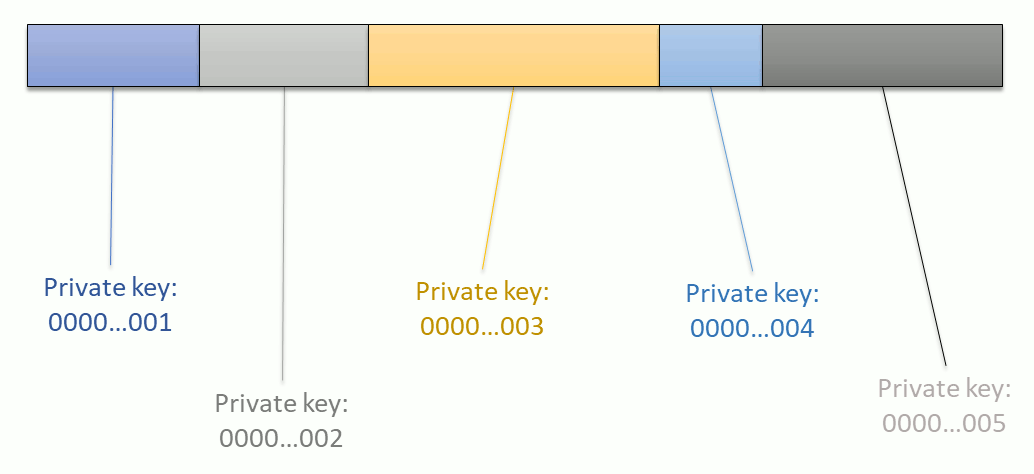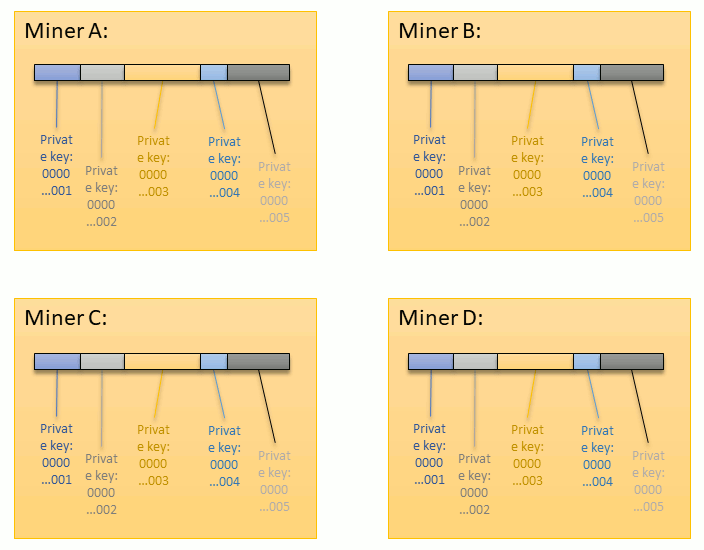Blockchain – explained in 10 min.
What is a blockchain? What is a smart contract? It’s really not that complicated.
#blockchain #smartcontract #bitcoin #ethereum #eos
Bitcoin – a database
Bitcoin can be perceived as a very secure database, containing who have access to which part of the database.
Imagine:
- Person A can access a part of the Bitcoin database, with private key 0000…001.
- Person B can access a different part of the Bitcoin database, with private key 0000…002.
- If A wants to trade with B, then a part of the A’s Bitcoin database can be decrypted with private key 0000…001 and encrypted again with private key 0000…002.
This process can be seen here:

If a person without any Bitcoin wants to buy some Bitcoin, they can generate a new private key (0000…006) and receive access to the Bitcoin database:

Decentralization – peer-to-peer
The Bitcoin database is decentralized and can be compared with peer-to-peer file sharing.
Imagine:
- Four people sharing files on a peer-to-peer network.
- If one person shares a file.
- Another person will download the file (get synced)
- Now two persons can download the file from the previous two people.

If a person loses the data, then the data can be restored from the other persons.
The same goes for the Bitcoin database, where persons are replaced by miners:

It means, that you don’t hold your Bitcoins on your USB, but all the miners do.
You can access your part of the Bitcoin database with your private key. Nobody else can access your part without your private key. This is why the Bitcoin is so secure.
When someone loses their private keys, the part of the Bitcoin database becomes inaccessible (and lost forever).
You could take your own copy of the Bitcoin database on a USB key, but your version would become out of date if it is not connected to the peer-to-peer network. Also, you would need a large USB key, since the size of the Bitcoin database was 197 gigabytes in Q4 2018 and it is growing all the time.
The Bitcoin database could be used to store data but is not used to do so, because it only has 8 transactions per second.
Ethereum & EOS – Smart contracts
Ethereum was the first blockchain to support smart contracts.
Kick-starter works almost like a smart contract, except that it is governed by the Kick-starter company, while a smart contract is governed by it’s blockchain.
Imagine:
- A product team wants to create a product.
- They put up a “smart” contract on Kick-starter with a money requirement.
- Supporters will donate money to the Kick-starter project.
- When the money requirement is fulfilled.
- Then the product teams produce and deliver the product.

It’s the opposite for a blockchain smart contract:
- Customers want a product.
- They put up a blockchain smart contract with product requirements.
- They put money into the smart contract as “finders fee”, when someone fulfills the requirements.
- Multiple product teams can try fulfilling the requirements.
- When one product team succeeds, they get paid by the smart contract.

The idea is fantastic, but Ethereum is too slow to be used for anything with only 16 transactions per second.
The EOS blockchain is much faster than Ethereum with 3000 transactions per second, leading the race to reach one million transactions per second.
Limitless possibilities
As is: The police governs peoples driving, by punishing those, who drives to fast, with fines.
To be: A smart contract will govern peoples driving, by rewarding those, who have driven safely for a whole year.
Testing skills will be in demand for writing good smart contracts.
—-
If you want to know the status of blockchain in 2019, then read my SogetiLabs article: https://labs.sogeti.com/status-of-blockchain-in-2019/
Or if you want to know more about something else, then please write a comment.